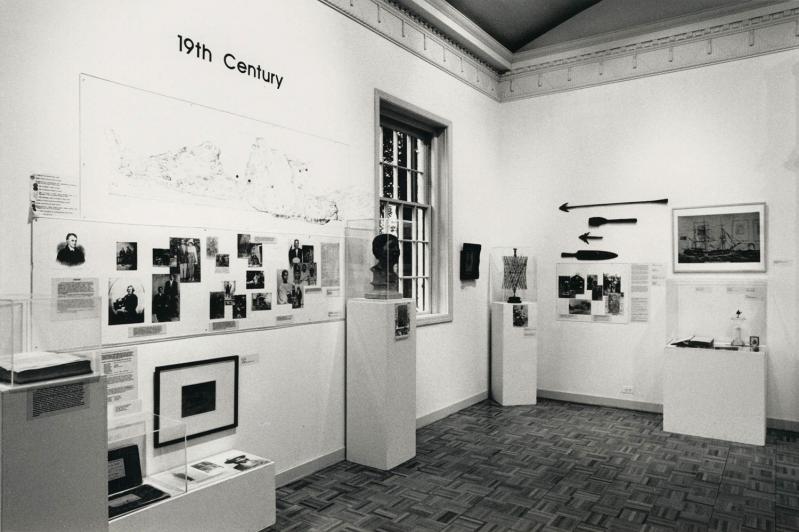The second Monday in October is Indigenous Peoples’ Day, an event honoring the cultures and histories of native peoples, which was first observed by a local school district in 2018. In honor of Indigenous Peoples’ Day this week, we are showcasing this photograph from a section of the exhibit created by Gaynell Stone, an archaeologist and guest curator. Titled “The Montauks: Native Americans of Eastern Long Island,” it opened at Guild Hall on Feb. 2, 1991, and ran until March 10. This image, part of the Local Artists Database, was taken by Noel Rowe for Guild Hall.
Stone’s exhibit included examples of Montauk artisans’ baskets and bowls, along with historical laws and events restricting the movement and economic sources of the Montauk people. To show this handiwork, she arranged loans from the National Museum of the American Indian in Washington, D.C. Sections of the exhibit focused on the Montauks in the 19th and 20th centuries. This period saw the Montauks displaced from the lands European settlers restricted them to in the early-18th century.
Throughout the show, Stone focused on the Montauks’ employment opportunities. She contrasted the work options for those who remained on the reservation and those who relocated pursuing more lucrative work, like whaling. The show delved into the many economic forces that drove many Montauk people to follow Samson Occom (1723-1792) to resettle on Oneida lands in upstate New York in 1775, and again in 1784. Occom, a Mohegan-born classically educated English-speaking minister who arrived as a preacher for the Montauk in 1750, played a starring role in the presentation.
Also important to the exhibit were the Cuffee, Pharaoh, and Fowler families, including Stephen Taukus Pharaoh (1821-1879), better known as Stephen Talkhouse, whose artistically carved and painted paddle was included with whaling tools. The exhibit concluded with Maria Pharaoh’s autobiographical account of losing the legal fight for the Montauks’ lands from 1896 -1917, which resulted in bankruptcy after a judge declared that the tribe had ceased to exist.
Andrea Meyer is the head of the East Hampton Library’s Long Island Collection.




